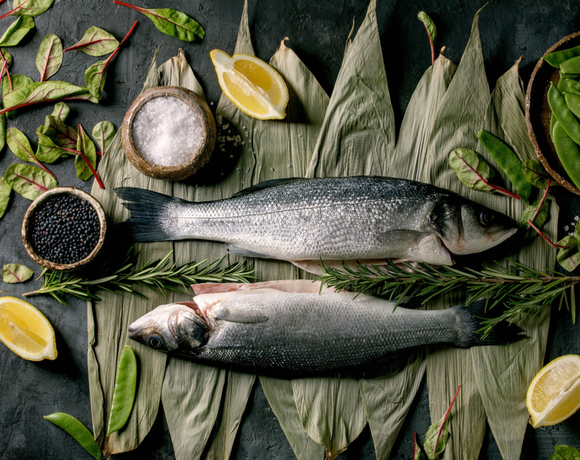It’s National Seafood Month! October is all about sustainable seafood around here. Everyone knows that seafood is an excellent component of a healthy diet, but overfishing, bycatch, and seafood fraud can make it challenging to decide which fish to eat. We asked our partners over at the Monterey Bay Aquarium Seafood Watch program to share some advice for buying seafood that has been fished or farmed responsibly. Your seafood choices are critical to a healthy ocean, so grab a Seafood Watch guide or the app, and let’s go shopping!

- Check our recommendations.
To find the right seafood recommendation, you’ll need to know three things: the species (what kind of fish is it), where the seafood is from and how it was caught or farmed. For example, if salmon is on the menu, find out if it’s Atlantic, Chinook, Chum, Coho, Pink, or Sockeye salmon. Next, ask where it’s from and how it was caught or farmed. Sometimes it can be hard to find out how seafood is caught or farmed. Often just knowing the country of origin will tell you whether to buy a product. Also, check to see if we have recommended an eco-certified option. If in doubt, choose a different Best Choice seafood.
2. Choose a business (or fishermen) you trust.
Many businesses have already made commitments to sustainable seafood. Shopping at a restaurant or grocery store with commitment means that you can do your research before visiting and be confident that what is offered meets your sustainability expectations. If you have access to a local fisherman, that’s another great way to learn more about the seafood you’re buying and the people that harvested it.
3. Ask questions.
The easiest thing you can do is ask the question: “Do you sell sustainable seafood?” By doing so, you help drive change in the marketplace. The more businesses hear support for sustainable seafood, the more interest they have in providing it as an option. We encourage you to thank the businesses that sell sustainable seafood and ask those that don’t to visit SeafoodWatch.org.
4. Consider buying whole fish.
Whole fish may seem outside the comfort zone of home chefs, but it is more affordable, versatile, and is less likely to have fraudulent labeling. If you have our Seafood Watch recommendations handy, whole fish can be a great way to guarantee you’re getting the sustainable product you paid for. Finally, if whole fish is available, ask the store to clean, gut, and portion it for you.
5. Be adventurous.
In North America we mainly eat five seafood products: canned tuna, shrimp, tilapia, salmon and pollock. Considering Seafood Watch has recommendations for over 300 species, that is a very limited menu! Next time you buy seafood consider trying something new: from arctic char to clams to seaweed, there are hundreds of Best Choices for you to explore!
Suggested recipe: Arctic Char with Parsley, Walnut and Almond Pesto



Leave a Reply
You must be logged in to post a comment.